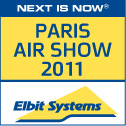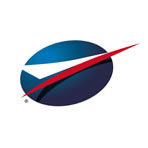With aerospace buzz soaring during the week-long Paris Air Show, excited visitors at this premier aerospace event may feel somewhat disappointed by the absence of the most advanced military jets. The F-35, T-50 or J-20 are not coming to Paris, although they are bound to create a lot of interest and news in the halls and in the chalet rows. Instead, civilian aircraft, new transport planes, and experimental aviation, such as the solar-powered ‘Solar Impulse’ or X-3 hybrid helicopter are likely to steal the headlines, along with innovative modification of familiar platforms taking new missions – dust-croppers turned to firefighters, or killer drones transformed into maritime search platforms. Among the new helicopters on display is the CH-148 Cyclone from Sikorsky making its international debut. Sikorsky also displays the S-70i, the latest ‘international’ model of the Black Hawk, produced in Poland. The AW-149 from AgustaWestland will also be on display, along with its bigger brother, AW159. AgustaWestland plans to demonstrate the AW149 in flight.

 Representing the fighter community are the traditional faces – Dassault Rafale F-3 and Eurofighter Typhoon, both particpating in the daily flying displays. The Pentagon is sending fewer aircraft than usual, this year, the Pentagon’s stable will include a Lockheed martin F-16C and C-130J, both participating in the aerial display, while the C-5 Galaxy will remain in the static display. The Boeing F-15E, C-17A and CH-47 will be presented at the static display only. U.S. department of Defense will also display two Bell Helicopters – UH-1Y Huey and AH-1Z Super Cobra, both U.S. Marine Corps aircraft.
Representing the fighter community are the traditional faces – Dassault Rafale F-3 and Eurofighter Typhoon, both particpating in the daily flying displays. The Pentagon is sending fewer aircraft than usual, this year, the Pentagon’s stable will include a Lockheed martin F-16C and C-130J, both participating in the aerial display, while the C-5 Galaxy will remain in the static display. The Boeing F-15E, C-17A and CH-47 will be presented at the static display only. U.S. department of Defense will also display two Bell Helicopters – UH-1Y Huey and AH-1Z Super Cobra, both U.S. Marine Corps aircraft.
Among the trainers, the Paris Air Show will highlight few of the modern trainers, including the Italian Aermacchi M346, M311, Pilatus PC12, and PC21, and Hawker Beechcraft T-6C. The later will also be showing its capabilities as a light attack / Counter Insurgency (COIN) aircraft in a special simulator built by Canadian simulator expert CAE. While the T-6 will show its simulated teeth, its bigger and stronger battle scarred competitor AT-802U from Air Tractor will be displayed here, alongside its firefighting sibling – AT-802F. The later was recently acquired by Israel, to form the first Israel Air Force firefighting squadron. Another firefighter on display is the BE200 shown by the Russian company Beriev. Both aircraft are offering advanved means for nations in combatting raging wildfires.
Military transports are represented by AIRBUS Military A400M, and C-295, being modified with a raotodome for a future early warning and control mission. Lockheed Martin also showcases the C-130J Super Hercules, and Alenia Aeronautica showing the C-27J. All transports, except the C295 will also participate in the flight displays.
Boeing is introducing here two of the latest versions of the half-century old ‘747 Jumbo Jet family, the 747- 8 passenger and Freighter. According to Boeing, the 747-8 freighter aircraft flew from Seattle to Paris fueled by Biofuel, highlighting the industry’s new trend toward ‘green aviation’. AIRBUS A380-800 taking part in the daily flight display will undoubtedly be one of the biggest attractions of the show. Continuing their battle on who’s ‘Air Show order book’ is bigger, Boeing and Airbus are likely to announce new orders throughout the show, but what would really mean a lot for the industry is how those orders affect the supply chain – Tier I (engines, airframe etc.) and Tier I and III suppliers. While the new Boeing 747-8, the latest variant of the Jumbo Jet family will debut here, Boeing is also expected to announce new orders for its new 787 Dreamliner. Beside the wide body aircraft, narrow-body aircraft are also making the news. From small commuters to larger airliners provided exclusively by Airbus and Boeing.
More activity is likely to take place at the exhibit halls, where companies will highlight new concepts and designs for future commuter and regional passenger aircraft. Among the new faces likely to join this category in upcoming years are the new ‘C series’ from Bombardier, the Russian Super Jet from Sukhoi and a future narrow-body aircraft planned from Embraer. Engine makers addressing this market are expected to announce new models to match this category that has the potential to outgrow wide body sales in coming years. At the flight line and static display area, visitors can view other regional and business planes, displayed by Bombardier, Sukhoi Superjet and and AN-148, developed by the Urkaine company Antonov.
If the presence of military aircraft diminishes year by year, Unmanned Aerial Systems (UAS) are becoming a major part of the display, at least in the static park. Among the new unmanned aircraft, the Predator B configured for naval surveillance, operated by the U.S. Customs and the Talarion from EADS shown here as a full-scale mockup. Israel’s Aeronautics is unveiling the newest member of the Orbiter UAV, an electrically powered air vehicle capable of performing 7 hour missions, carrying a new multi-sensor EO payload comprising a daylight and FLIR cameras and a laser designator. Israel Aerospace Industries (IAI) is displaying here two of the newest members of the Panther vertical take-off and landing UAVs, as well as the ETOP tethered hovering surveillance platform. The Heron from IAI is also on display at the static park.

















